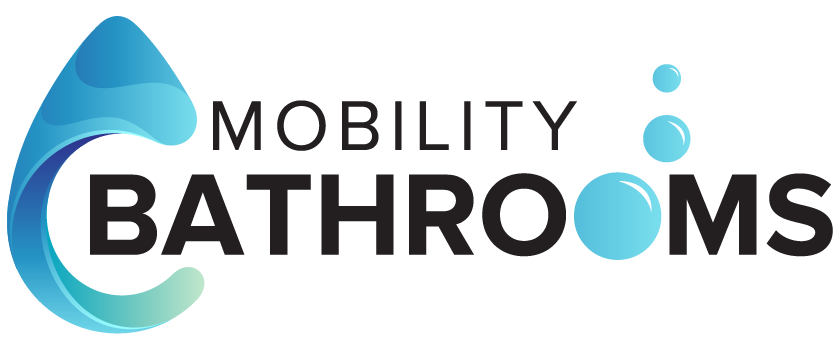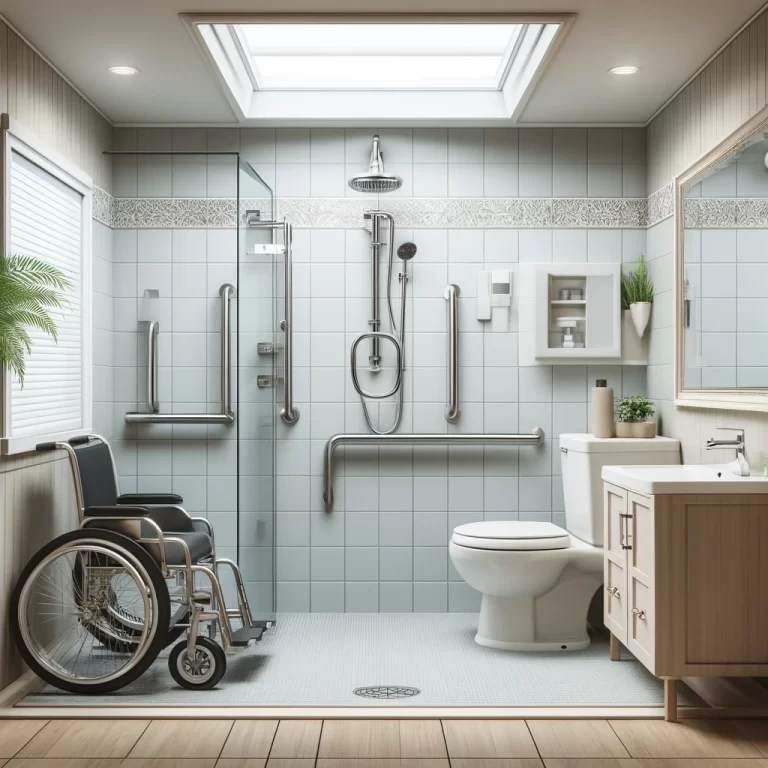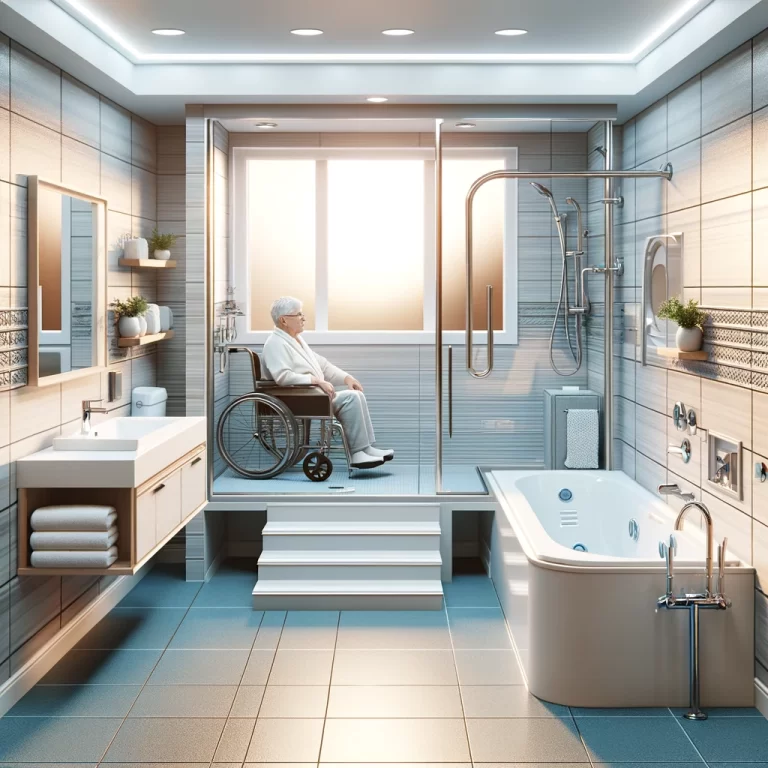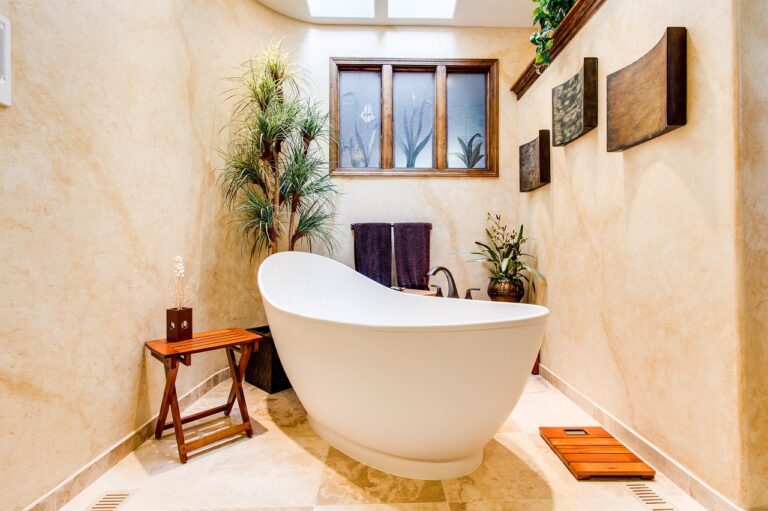How do you shower with limited mobility
Limited mobility can present challenges when it comes to daily tasks such as showering. From difficulty getting in and out of the shower to balance issues, there are various obstacles that individuals with limited mobility may face. We will explore the importance of showering with limited mobility, the challenges that may arise, solutions to make showering easier, tips for preparation and showering safely, as well as alternative methods for maintaining personal hygiene. Let’s find out how to navigate showering with limited mobility.

What Is Limited Mobility?
Limited mobility refers to a condition where individuals face challenges in moving freely or with ease due to physical disabilities or impairments.
This restricted movement can greatly impact various aspects of everyday life, including self-care activities such as personal hygiene routines. For example, bathroom adaptations become crucial for individuals with limited mobility to ensure they can access and use these facilities safely and comfortably. Simple tasks like taking a shower or using the toilet can become challenging without the appropriate modifications and specialised equipment.
Individuals with limited mobility often rely on mobility aids such as wheelchairs, walkers, or canes to move around independently. These aids play a vital role in promoting freedom of movement and enhancing overall quality of life. For visually impaired individuals, specially designed aids like white canes or guide dogs are essential for navigating their surroundings safely.
Why Is It Important To Shower With Limited Mobility?
Showering with limited mobility is crucial for maintaining personal hygiene, promoting a sense of well-being, and ensuring physical comfort, especially for individuals using wheelchairs or requiring accessible walk-in showers.
Individuals with limited mobility face unique challenges in navigating the bathroom environment, making features like wheelchair accessibility and walk-in showers essential for their independence and safety. A well-designed accessible shower not only facilitates the bathing process but also reduces the risk of accidents and injuries.
Regular showers play a vital role in preventing skin infections, improving circulation, and enhancing overall well-being. The warm water helps in soothing muscles, reducing stiffness, and promoting relaxation, which is particularly beneficial for individuals with limited mobility.
What Are The Challenges Of Showering With Limited Mobility?
Individuals facing limited mobility encounter various challenges while showering, including difficulties in maintaining balance, reaching essential items, and safely entering or exiting the shower area.
In such situations, the need for grab rails becomes crucial to provide support and stability. These rails can be strategically placed to assist in manoeuvring in and out of the shower safely.
Assistance poles can offer additional support for those with limited mobility, aiding in standing or transferring while showering. For individuals who struggle with standing for extended periods, bath lifts prove to be a useful adaptation, providing a safe and comfortable seating option within the shower area.
Difficulty Getting In and Out of the Shower
One of the primary challenges faced by individuals with limited mobility is the difficulty in safely getting in and out of the shower, especially in the absence of appropriate bathroom adaptations like walk-in showers.
Traditional showers with high entry thresholds can be particularly daunting for those with mobility issues, posing risks of slips and falls. The struggle to lift their legs over the rim or manoeuvre within the confined space can lead to accidents. Walk-in showers offer a solution by eliminating barriers and providing a wider, more accessible entrance.
Grab bars strategically placed inside the shower can offer essential support for balance and stability, further enhancing safety. These assistive features not only aid in entering and exiting the shower but also provide a sense of independence and confidence for individuals with limited mobility.
Limited Reach and Range of Motion
Limited mobility often results in challenges related to reaching essential shower items or maintaining a full range of motion during bathing, particularly affecting individuals reliant on mobility aids or those with visual impairments.
For individuals with mobility issues, the simple act of stepping in and out of a slippery shower stall can become a daunting task, risking slips and falls. The need to bend down or stretch upward to access toiletries or adjust the water controls can be extremely strenuous for those with limited movement capabilities. This often leads to feelings of frustration and dependency on others for assistance, highlighting the crucial need for specialised aids and tools designed to facilitate a safer and more independent bathing experience.
Balance and Stability Issues
Maintaining balance and stability whilst showering becomes a major concern for individuals with limited mobility, necessitating the use of grab rails, assistance poles, or other supportive devices to prevent accidents and ensure safety.
These aids not only provide physical support for manoeuvring in the shower but also offer mental reassurance, allowing individuals to shower independently with reduced fear of slipping or falling. Grab rails, strategically placed within reach, serve as strong anchor points, offering stability during movements.
Assistance poles, often floor-to-ceiling in design, add an extra layer of security, especially helpful for individuals who may need to adjust their position or require assistance standing up and sitting down.
These supportive devices can be customised to suit individual needs, further enhancing comfort and confidence during personal care routines.
What Are The Solutions For Showering With Limited Mobility?
Several solutions exist to address the challenges of showering with limited mobility, including the installation of grab bars, the use of shower chairs or benches, and the application of bathing aids to enhance comfort and safety.
One of the most crucial aspects of enhancing accessibility in the shower is the installation of grab bars. These sturdy bars provide essential support for stability and balance, reducing the risk of slips and falls. Incorporating grab bars strategically along the walls of the shower can greatly improve manoeuvrability and confidence for individuals with limited mobility.
The use of shower chairs or benches can offer a comfortable seating option, allowing individuals to shower safely while seated. These devices come in various designs to accommodate different needs, such as height-adjustable options or chairs with backrests.
Furthermore, bathing aids such as handheld showers, non-slip mats, and long-handled sponges can greatly enhance the showering experience by promoting independence and convenience. These aids enable individuals to reach and clean themselves more effectively, ensuring a thorough and comfortable bathing routine.
Installing Grab Bars
Installing grab rails in the shower area is a practical solution to assist individuals with limited mobility in maintaining balance and preventing falls, offering crucial support during bathing routines.
These essential safety features are designed to provide stability and security, reducing the risk of accidents and injuries while showering. Additionally, grab rails promote independence by enabling users to move confidently and comfortably within the shower space. Whether it’s for older adults, individuals recovering from injuries, or those with disabilities, the presence of grab rails offers a sense of reassurance and peace of mind during daily self-care activities.
Using a Shower Chair or Bench
Utilising a shower chair or bench is a practical approach for individuals with limited mobility to shower comfortably and securely, especially when combined with accessible walk-in showers for enhanced accessibility.
Shower chairs and benches provide a stable surface for those who may struggle to stand for extended periods, reducing the risk of slips and falls in the shower.
With the added support and security these adaptive devices offer, individuals can maintain their independence while showering, boosting their confidence and quality of life.
The convenience of having a shower chair or bench in place allows for a more relaxed and stress-free bathing experience, making daily routines safer and more enjoyable.
Using a Handheld Showerhead
Incorporating a handheld showerhead can significantly improve the bathing experience for individuals with limited mobility, allowing for greater flexibility and control during showering, especially when combined with other bathing aids.
These showerheads are designed to be easily adjustable, enabling users to customise the water flow pattern and direction according to their needs.
The handheld feature allows for reaching difficult areas with ease, ensuring a thorough cleansing experience.
Their lightweight and ergonomic design make them user-friendly for individuals with limited strength or dexterity.
Utilising Bathing Aids
Bathing aids such as bathing cushions and slip-resistant mats offer additional support and safety measures for individuals with limited mobility, enhancing the overall bathing experience and reducing the risk of accidents.
These aids provide a sense of independence and dignity to the user, allowing them to bathe with less reliance on assistance from others. Bathing cushions particularly help in easing pressure points and making prolonged baths more comfortable. On the other hand, slip-resistant mats play a crucial role in preventing slips and falls by providing a stable surface in wet conditions, ensuring a secure showering environment. By incorporating these aids into daily routines, individuals can enjoy a safer bathing experience without compromising their comfort.
How Can One Prepare For Showering With Limited Mobility?
Preparing for showering with limited mobility involves organising shower supplies, ensuring the presence of a carer or support person, and making necessary adjustments such as installing emergency pull cords or utilising height-powered toilets for added convenience.
Additional preparatory steps include:
- Placing non-slip mats both inside and outside of the shower to prevent falls.
- Ensuring all toiletries are within reach.
- Using shower chairs or benches for stability.
- Installing grab rails and assistance poles strategically to assist with movement.
It is crucial to have a phone or emergency call button accessible in case of need, and keeping towels and clothing nearby for quick access post-shower. Considering a handheld showerhead for easier control and flexibility can enhance the overall showering experience.
Organising Shower Supplies
Organising shower supplies in an accessible manner is crucial for individuals with limited mobility, ensuring that essential items are within reach, and incorporating features like floating basins for added convenience.
Having shower supplies within easy reach can significantly improve the bathing experience for those facing mobility challenges. It not only promotes independence but also enhances safety within the bathroom environment. Accessibility solutions, such as grab bars and adjustable showerheads, can work in conjunction with well-organised supplies to create a functional and comfortable space. Incorporating floating basins not only saves valuable floor space but also ensures that essentials are easily accessible without the need for excessive bending or stretching. By implementing these adaptations, individuals with limited mobility can navigate their daily routines with greater ease and dignity.
Having a Caregiver or Support Person Present
Having a carer or support person present during showering can offer valuable assistance and ensure the safety and well-being of individuals with limited mobility, especially those who are visually impaired or require additional support.
Support aids such as grab rails, shower chairs, and non-slip mats enhance the accessibility and minimise the risk of accidents during bathing routines for individuals with mobility challenges. The presence of a carer not only provides physical assistance in manoeuvring in and out of the shower but also offers emotional support, fostering independence and dignity. The supervision offered by a support individual can prevent falls and injuries, promoting a sense of security and comfort for the person with mobility difficulties.
Ensuring the Bathroom is Safe and Accessible
Ensuring the bathroom is safe and accessible involves installing grab rails, using sliding doors for easy entry, and implementing other modifications to create a comfortable and secure environment for individuals with limited mobility.
Having grab rails strategically placed near the toilet and in the shower can provide crucial support and stability for individuals with limited mobility, helping to prevent falls and accidents. Opting for sliding doors instead of traditional swinging doors can make it easier to manoeuvre a wheelchair or walker into the bathroom, enhancing overall accessibility. These modifications not only promote independence but also contribute to a sense of confidence and well-being for those with mobility challenges.
What Are Some Tips For Showering With Limited Mobility?
To enhance the showering experience with limited mobility, individuals should consider taking their time, using warm water, gentle cleansers, and incorporating aids such as shower seats or benches for added comfort and support.
Warm water can help to relax muscles and ease joint stiffness, making it easier to move and clean effectively. Using gentle cleansers can prevent skin irritation and dryness common in individuals with limited mobility.
Shower seats offer stability and reduce the risk of slips or falls, providing a safe and secure showering environment. It’s crucial to choose a seat that fits the shower space and supports the individual’s weight.
When selecting aids like shower seats, opt for models with non-slip surfaces and adjustable heights for personalised comfort and convenience.
Take Your Time
One essential tip for individuals with limited mobility while showering is to take their time, allowing for a relaxed and safe bathing experience, especially when using grab rails or other supportive features.
Proper pacing during showering not only ensures a thorough clean but also minimises the risk of accidents for those with mobility challenges. Installing grab rails in strategic locations within the shower area provides crucial support, enhancing stability and enabling independence. These essential aids come in various designs and materials, catering to different needs and preferences. Incorporating non-slip mats or benches further promotes a secure bathing environment, accommodating varying levels of mobility. Embracing these adaptations fosters a sense of security and confidence, helping individuals maintain their autonomy and dignity while showering.
Use Warm Water
Using warm water during showering can help relax muscles and improve circulation, benefiting individuals with limited mobility, especially when assisted by mobility aids or bath lifts for added comfort.
Warm water has the incredible ability to soothe tight and tense muscles, making it easier for individuals with limited mobility to move and feel more comfortable during their shower routines. The increased blood circulation from the warm water can also aid in reducing stiffness and pain, allowing for a more enjoyable and therapeutic bathing experience. When paired with mobility aids, such as grab bars or shower benches, individuals can further enhance their safety and independence in the bathroom. This combination promotes relaxation and provides essential support for those with mobility challenges.
Use Gentle Cleansers
Opting for gentle cleansers is crucial for individuals with limited mobility, particularly those using walk-in showers or who are visually impaired, ensuring a soothing and safe bathing experience without harsh chemicals.
Using mild cleansers is essential as they are gentle on the skin and reduce the risk of irritation, making showering more comfortable for those with mobility challenges. These products are specially formulated to maintain the skin’s natural moisture balance, preventing dryness and maintaining skin health.
For individuals with visual impairments, selecting products with clear labelling and easy-to-use packaging can greatly enhance their shower experience by promoting independence and safety. Opting for non-slip products can also minimise the risk of falls in the shower, providing added security during bathing.
Use a Shower Seat or Bench
Incorporating a shower seat or bench can significantly enhance the comfort and safety of individuals with limited mobility during showering, especially when combined with supportive aids like assistance poles for added stability.
Shower seats provide a secure and stable platform for those who may struggle to stand for long periods or maintain their balance in the shower. By offering a place to sit, they reduce the risk of slips and falls, which are common concerns for individuals with mobility challenges. This added support not only increases safety but also promotes independence, allowing users to shower with confidence and peace of mind.
What Are Some Alternatives To Showering With Limited Mobility?
For individuals facing difficulties with showering due to limited mobility, alternatives such as bed baths, wet wipes, or dry shampoo offer convenient and effective ways to maintain personal hygiene and cleanliness.
Bed baths are an excellent solution for individuals who are unable to shower independently. They involve using a basin of warm water, soap, and a flannel to gently cleanse the body while lying in bed. This method not only keeps the skin clean but also helps in relaxation and comfort.
- Wet wipes are handy for quick freshening up when a full bath or shower isn’t possible. They are pre-moistened cloths designed to clean and refresh the skin without the need for water. Wet wipes come in various sizes and scents, making them a versatile option for on-the-go hygiene.
- Dry shampoo is another convenient alternative that absorbs excess oil and dirt from the hair without the need for water. It comes in spray or powder form and is suitable for individuals with limited mobility who find traditional hair washing challenging.
Using a Bed Bath
A bed bath serves as a practical alternative for individuals with limited mobility who find traditional showering challenging, offering a convenient and accessible method for personal hygiene, particularly when assisted with aids like assistance poles.
Bed baths not only promote autonomy and comfort for those with mobility challenges but also reduce the risk of slips and falls in the bathroom. The use of assistance poles during a bed bath provides additional stability and support, ensuring a safer and more efficient bathing experience. The gentle and controlled approach of bed baths can help individuals maintain their skin health, preventing issues such as pressure sores or skin infections.
Using Wet Wipes or No-Rinse Cleansers
Wet wipes and no-rinse cleansers offer a practical solution for individuals with limited mobility, ensuring effective hygiene without the need for water, benefiting those who are visually impaired or using slip-resistant mats for safety.
These products are especially valuable for those who may have difficulty accessing a traditional bath or shower due to physical limitations. The ease of use makes them ideal for maintaining cleanliness and comfort, promoting independence and confidence. For individuals with visual impairments, the tactile feedback provided by wet wipes can enhance the cleanliness experience. When combined with slip-resistant mats, these alternatives create a safer environment, reducing the risk of accidents and injuries in the bathroom.
Using Dry Shampoo
Dry shampoo provides individuals with limited mobility a quick and efficient way to refresh their hair without the need for traditional washing, offering convenience and comfort, particularly when utilising aids like bath lifts or floating basins.
For those who face challenges with mobility, maintaining personal hygiene can be a task that requires additional support and effort. The use of dry shampoo presents a viable solution, allowing individuals to maintain clean and fresh hair without the need for water and conventional washing methods.
This alternative not only saves time but also reduces the physical strain associated with traditional hair washing routines. By incorporating dry shampoo into their hair care regimen, individuals can enjoy the revitalising effects of clean hair in a way that is both efficient and user-friendly.
Frequently Asked Questions
How do you shower with limited mobility?
Showers can be challenging for individuals with limited mobility. Here are some frequently asked questions to help you navigate showering with limited mobility.
Do I need to make any modifications to my shower?
Depending on your specific needs, it may be necessary to make some modifications to your shower. This could include installing grab bars, a shower chair, or a handheld shower head. It’s important to assess your needs and make necessary modifications for your safety and comfort.
How can I safely enter and exit the shower?
One option is to install a shower bench or chair just outside of the shower. You can sit down and then scoot yourself into the shower. Another option is to use a transfer bench, which allows you to slide from outside the shower into a seated position inside the shower.
What kind of shower chair should I use?
There are various types of shower chairs available, including ones with backrests, armrests, and adjustable heights. It’s important to choose a chair that provides the necessary support and stability for your specific mobility needs.
How can I reach my body to wash when sitting down?
A long-handled loofah, sponge, or brush can be helpful for reaching areas of your body that may be difficult to reach while sitting down. You can also consider using a shower sprayer with a long hose to easily reach all areas of your body.
What if I have trouble standing for long periods of time?
It’s important to listen to your body and not push yourself beyond your limits. If standing for long periods of time during a shower is difficult, consider using a shower stool or chair to sit on. You can also break up your shower into shorter increments to give your body a break.






